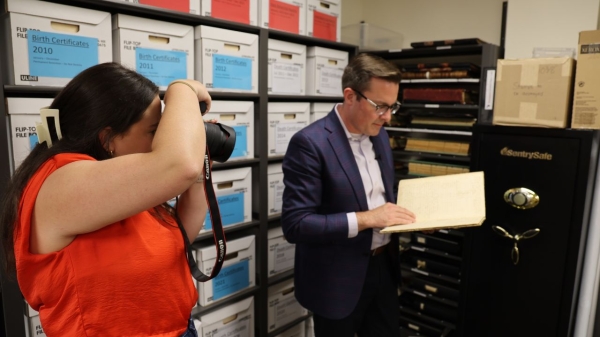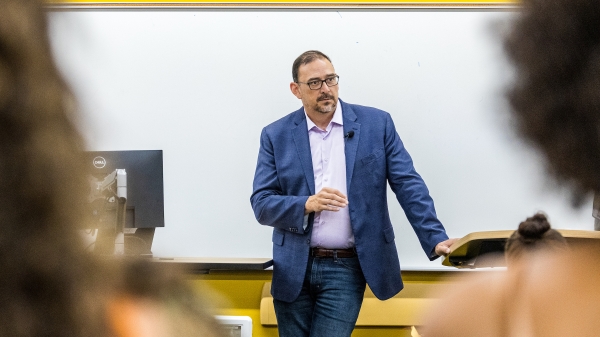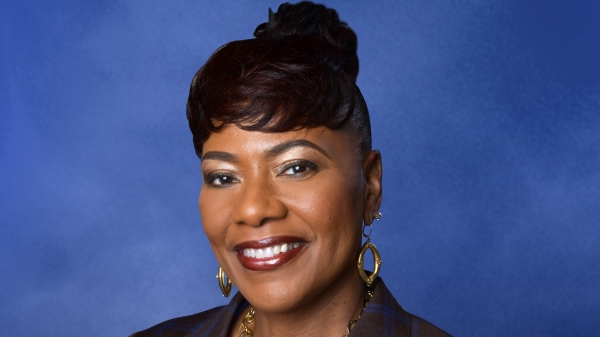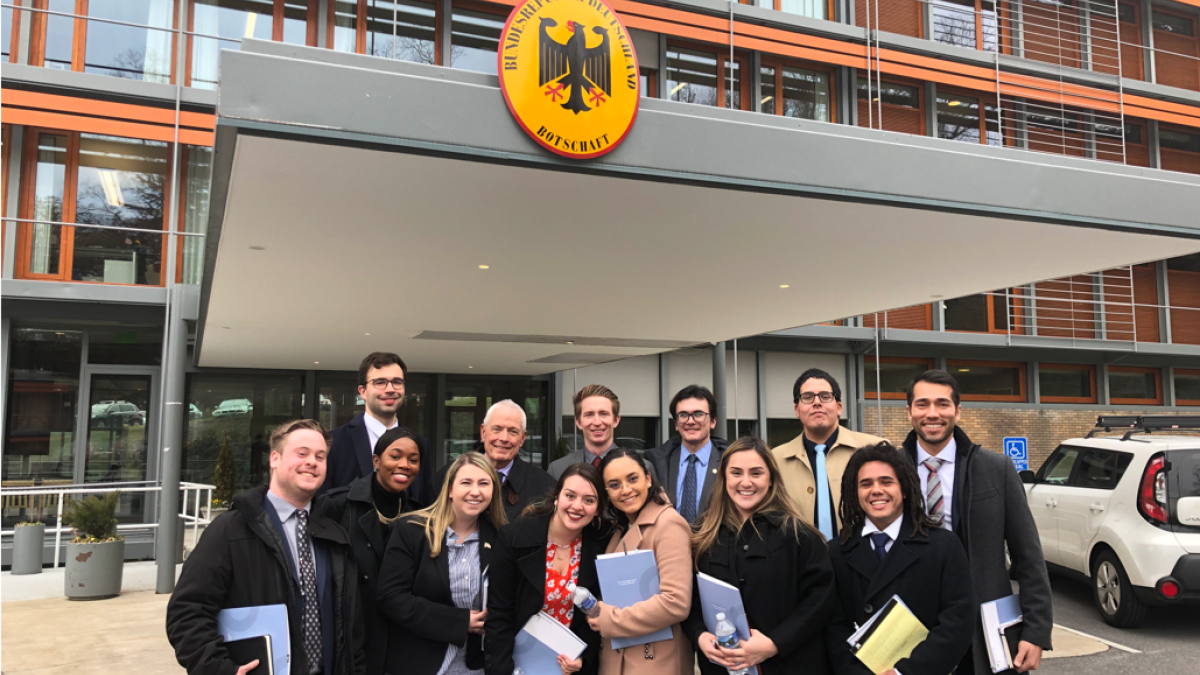Scott Goldner is a second-year JD student in the Sandra Day O’Connor College of Law at Arizona State University. And for 15 weeks last fall, he was also the public affairs officer in the U.S. Embassy in Hungary.
Goldner spent the fall 2019 semester as a member of the Policy Design Studio at ASU’s McCain Institute for International Leadership in Washington, D.C. The Policy Design Studio term includes an intensive exercise in which studio members are assigned the roles of U.S. embassy staff members in actual nations.
Goldner was one of seven students in his Policy Design Studio class, working with Ambassador Robert Bradtke, a retired career U.S. foreign service officer whose postings included Guyana; Yugoslavia and Croatia; Moscow; Bonn, Germany; and London. He served as executive secretary of the National Security Council for President Bill Clinton and President George H.W. Bush, and later became deputy assistant secretary of state for European affairs.
A new perspective on international policy
“I knew very little about Hungary before the assignment,” said Goldner, who went to the nation’s capital as a student in ASU Law’s International Rule of Law and Security Program. “But the (Policy Design Studio) class was an immersive experience in which I learned about both Hungarian and regional economic, political and security issues. We met with the Hungarian deputy chief of mission — the No. 2 behind the ambassador at the Hungarian Embassy — two former Hungarian ambassadors to the U.S., the Hungarian expert at the Helsinki Commission, and an ASU professor who specializes in diplomacy.”
Goldner isn’t new to immersive international experiences. He and his brother were born in the U.S., but their French parents moved the family to Paris when Goldner was less than a year old.
“We lived in Paris for a little over four years, and then we moved to Brussels for my parents’ work,” he said. “When I was 10, we moved to a suburb of Portland, Oregon, and I stayed there until I came to ASU.”
International policy, though, was new territory of another kind. In fact, Goldner said, “I wasn't interested in policy before the (Policy Design Studio) class, or before coming to D.C. But as I've gained experience doing legal work, I decided that, while I enjoy the challenges of performing a legal analysis, I’d really enjoy combining policy in my future work. Legal analysis, a lot of the time, is small-picture, detail-oriented,” he said. “Policy, on the other hand, involves big-picture thinking and requires considering many more factors.”
Learning from those who do
Edward O’Donnell is well equipped to introduce Policy Design Studio members to big-picture thinking. O’Donnell, who oversees the Policy Design Studio as an ASU professor of practice at the McCain Institute, is also Ambassador O’Donnell, a retired foreign service officer who served 33 years in Latin America and German-speaking Europe, with additional positions in Washington, D.C.
“ASU President Michael Crow had the original idea to develop a Policy Design Studio course at the McCain Institute, and the name was also his," O’Donnell said. Ambassador Michael Polt, who is a senior director at the institute, conceived of the undergraduate course as a ‘virtual reality’ seminar that would give students an experience of what it is like to be a U.S. diplomat in an embassy overseas.”
During his 35-year career in foreign service, Polt held the ambassador posts to the Republic of Estonia, Serbia and Montenegro, and was principal deputy and acting assistant secretary of state for legislative affairs under Colin Powell and Hilary Clinton.
Polt led the first Policy Design Studio course in fall 2013, O’Donnell said.
“That first cohort of students studied the U.S. bilateral relationship with Mexico and learned how policy and diplomatic programs are developed, as if they were the actual U.S. diplomats in the embassy country team in Mexico City.”
Subsequent years have seen the Policy Design Studio classes taking the roles of embassy staff to Germany, the Democratic Republic of Congo, the United Kingdom, Vietnam, Afghanistan and Colombia.
These immersive experiences allow the Policy Design Studio to fulfill its primary goal of providing students a dynamic, interactive, hands-on learning experience in international relations that will prepare them for careers in the State Department career foreign service and other U.S. agencies, and for nonprofits and the private sector.
The second goal, O’Donnell said, is “... to develop character-driven leaders of the future, using the model of Sen. McCain and other leaders, who made tough decisions based on ‘doing the right thing, for the right reasons, the right way, for a cause greater than self.’”
O’Donnell said using role-play and the U.S. Embassy Country Teams lets each student sharpen their skills in analysis, oral and written communication, working successfully in groups, and setting and achieving goals toward a shared purpose in international affairs.
The next generation of character-driven leaders
Scott Goldner is currently putting the skills he learned in the Policy Design Studio last fall to use as an intern in the Office of Justice for Victims of Overseas Terrorism, part of the National Security Division of the Justice Department.
“It's been a great experience so far,” he said. “I’m researching international counterterrorism and victim rights law, which was one of my goals for the internship.” He has also been able to extern for the National Nuclear Security Administration, a semi-autonomous component of the Department of Energy.
Goldner says his semester in the Policy Design Studio was invaluable, not only for the exposure it gave him to veteran and currently posted foreign service officers — “the experiential learning opportunities were terrific” — but for how it required him to apply what he learned in a career area he was unfamiliar with.
“I had no prior experience with public affairs and communications,” he said, “and I found I liked thinking about how to frame issues; how an embassy would respond to a particular crisis, as well as how a diplomatic mission can enhance its presence in an unobtrusive way.”
ASU political science alumnus Ryan Sabel was part of the spring 2016 cohort of the Policy Design Studio. His time in Washington also included an internship in the office of Arizona Rep. Matt Salmon, and he’s now legislative coordinator in the office of Arizona Gov. Doug Ducey.
Sabel said that at their Wednesday Policy Design Studio meetings, held in the Decision Theater of the McCain Institute, “we would be confronted with simulated issues that the embassy would have to respond to, and we'd have to figure out what our role was if there was a national crisis. It really kept us on our feet, but I feel like I learned a lot about how U.S. foreign policy is conducted at the ground level in the embassy.”
Sabel said the semester was worth much more than the credits it added to his transcript, but said those credits were even more valuable to him because, “… at the same time you’re earning that credit, you're not losing time here at (ASU), so you're still on track to graduate.”
Also valuable were the contacts he established.
“Making connections is the best thing you can do,” Sabel said. “Having a degree and having experience as an intern on the Hill are great, but making personal connections, which this program allows you to do very well, makes it a lot easier to find a job in your field.”
Studying policy where it’s made
O’Donnell says the opportunity to make those connections is one aspect that makes the Policy Design Studio unique, even in Washington, D.C.
“I know of nothing similar to this course that is 15 weeks of preparing the next generation of leaders through the class and a four-day a week internship in Washington, D.C.,” O’Donnell said. “Also unique is the student’s semester in the nation’s capital and connecting with career opportunities in the global workplace. The McCain Institute brings together the students with a vast network of foreign policy professionals.”
Nearly 170 of alumni of the Policy Design Studio program are currently in their first career track, O’Donnell said. They’ve found places in the U.S. foreign service, military and federal civil service; as policy analysts for nonprofit organizations; in law schools and graduate schools; and with Fulbright, Pickering and other fellowships.
“Organizations in Washington who host our students are always impressed with their knowledge, drive and dedication,” O’Donnell said. “By learning from senior foreign policy experts who have developed and implemented foreign policy decisions at the top level of the U.S. government and military, these students hear firsthand from those who manage tough issues. It helps them start thinking about how to prepare for their own challenges of the future as character-driven leaders. And asking their own questions directly intensifies the learning experience.
High-tech, high-pressure proof
The culmination of each student’s Policy Design Studio experience is a capstone project, a presentation they prepare and share in the Institute’s Decision Theater. This immersive, multimedia environment gives students the tools to explore and explain complex data and analysis for their audience.
And that audience is intimidating: State Department experts, embassy representatives of the nation the student was assigned, ambassadors and military general officers. The presentations are much more than simple, “What I learned this semester” reports, O’Donnell said.
“The students propose how to develop U.S. interests in the country of study and how to improve the bilateral relationship with the government and people, and a panel of experts offers advice and reactions,” he said.
O’Donnell recalls an instance that attests to the depth and value of the PDS program.
“State Department foreign service officers, in this case the German desk officers, said that the student’s ideas were unique and creative, and they would take the ideas back to the State Department for possible implementation in their real work with Germany.”
More Law, journalism and politics

ASU's Carnegie-Knight News21 project examines the state of American democracy
In the latest project of Carnegie-Knight News21, a national reporting initiative and fellowship headquartered at Arizona State…

Arizona secretary of state encourages students to vote
Arizona Secretary of State Adrian Fontes looked right and left, taking in the more than 100 students who gathered to hear him…

Peace advocate Bernice A. King to speak at ASU in October
Bernice A. King is committed to creating a more peaceful, just and humane world through nonviolent social change.“We cannot…
